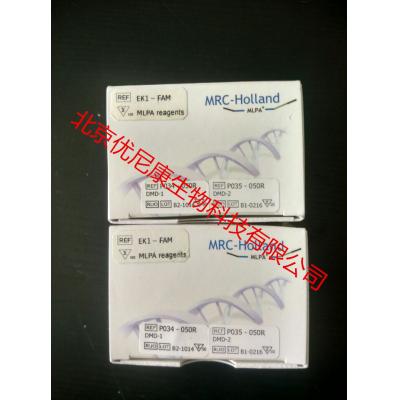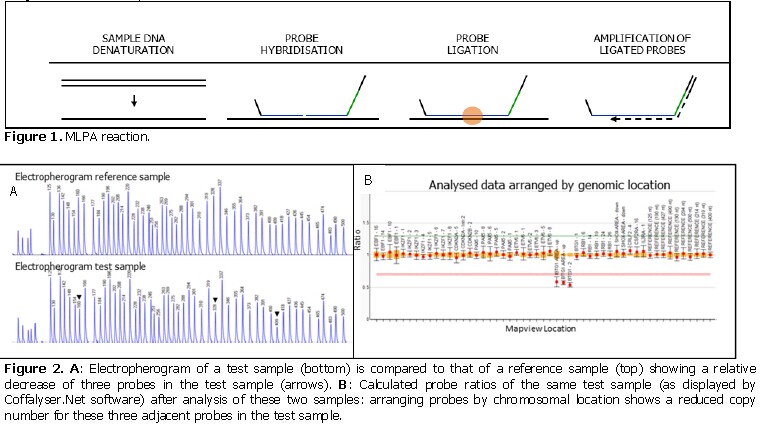- 欢迎来到北京优尼康生物科技有限公司
- |
-
商品分类

 010-64814275
010-64814275

 010-64814275
010-64814275

INTENDED USE
Copy Number Variations (CNVs) are a prominent source of genetic variation in human DNA and play a role in a wide
range of disorders. Multiplex Ligation-dependent Probe Amplification (MLPA) is a semi-quantitative technique that is
used to determine the relative copy number of up to 60 DNA sequences in a single multiplex PCR-based reaction.
MRC-Holland manufactures and sells MLPA reagents and a wide range of MLPA probemixes. Together, these can be
used to detect deletions and duplications in a DNA sample. Details on the intended use are specified in the MLPA
probemix-specific Product Description.
2. MLPA ASSAY PRINCIPLE
As outlined in Figure 1, the principle of MLPA is based on the amplification (by use of a single PCR primer pair) of up
to 60 probes, each of which detecting a specific DNA sequence of approximately 60 nt in length. After denaturation of
the sample DNA, a mixture of MLPA probes is added to the sample. Each MLPA probe consists of two oligonucleotides
that must hybridise to immediately adjacent target sequences in order to be ligated into a single probe. Each probe in
an MLPA probemix has a unique amplicon length, typically ranging between 130-500 nt. During the subsequent PCR
reaction, all ligated probes are amplified simultaneously using the same PCR primer pair. One PCR primer is
fluorescently labelled, enabling the amplification products to be visualised during fragment separation. This is done on
a capillary electrophoresis instrument, yielding a specific electropherogram (Figure 2, left). The relative height of each
individual probe peak, as compared to the relative probe peak height in various reference DNA samples, reflects the
relative copy number of the corresponding target sequence in the sample. A deletion of one or more target sequence
thus becomes apparent as a relative decrease in peak height (Figure 2, right), while an increase in relative peak
height reflects an amplification.
